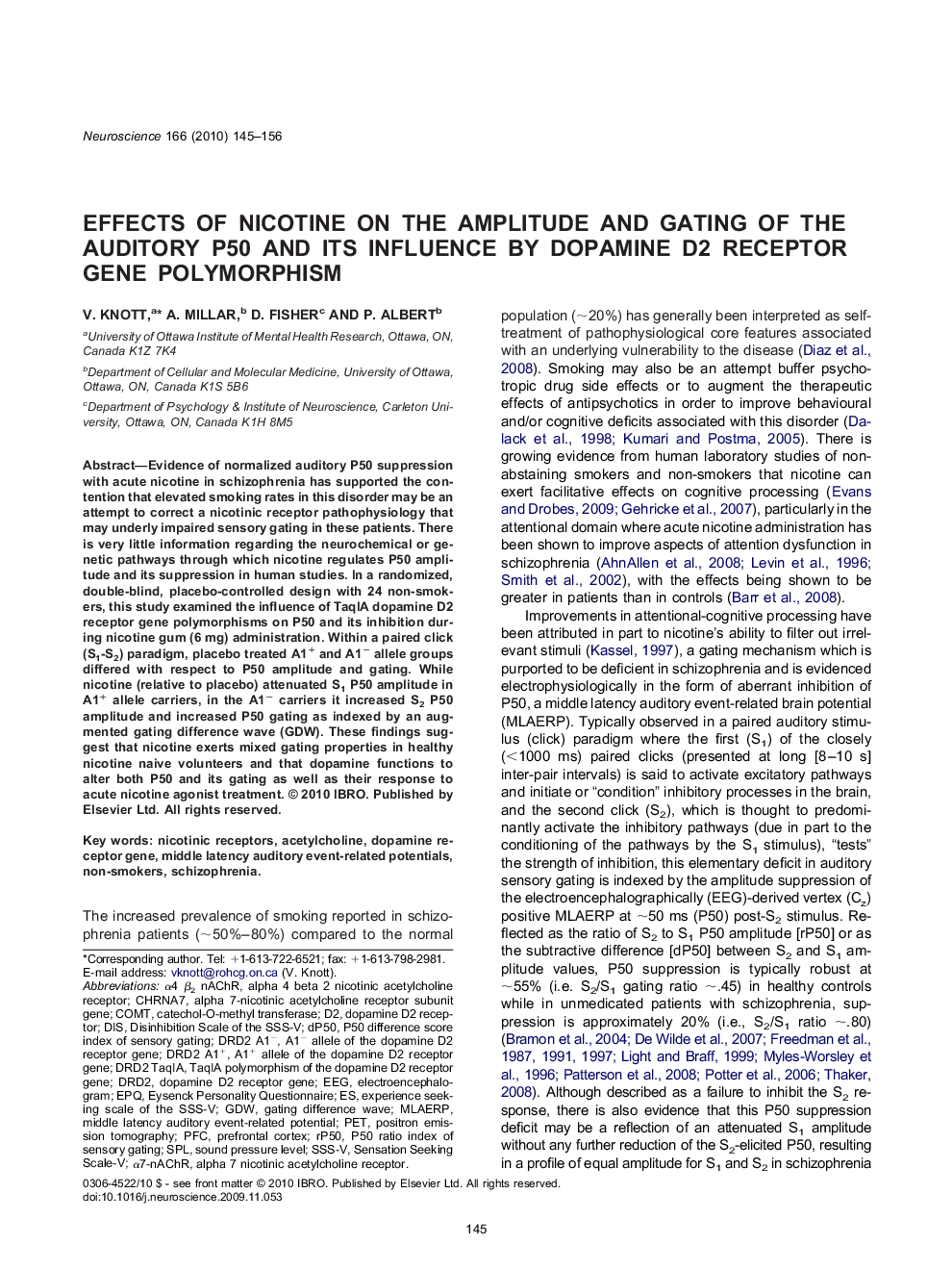| Article ID | Journal | Published Year | Pages | File Type |
|---|---|---|---|---|
| 4339584 | Neuroscience | 2010 | 12 Pages |
Abstract
Evidence of normalized auditory P50 suppression with acute nicotine in schizophrenia has supported the contention that elevated smoking rates in this disorder may be an attempt to correct a nicotinic receptor pathophysiology that may underly impaired sensory gating in these patients. There is very little information regarding the neurochemical or genetic pathways through which nicotine regulates P50 amplitude and its suppression in human studies. In a randomized, double-blind, placebo-controlled design with 24 non-smokers, this study examined the influence of TaqIA dopamine D2 receptor gene polymorphisms on P50 and its inhibition during nicotine gum (6 mg) administration. Within a paired click (S1-S2) paradigm, placebo treated A1+ and A1â allele groups differed with respect to P50 amplitude and gating. While nicotine (relative to placebo) attenuated S1 P50 amplitude in A1+ allele carriers, in the A1â carriers it increased S2 P50 amplitude and increased P50 gating as indexed by an augmented gating difference wave (GDW). These findings suggest that nicotine exerts mixed gating properties in healthy nicotine naive volunteers and that dopamine functions to alter both P50 and its gating as well as their response to acute nicotine agonist treatment.
Keywords
PFCGDWSPLα7-nAChRCOMTDopamine D2 receptor geneEPQCHRNA7DRD2Alpha 7 nicotinic acetylcholine receptorAcetylcholineSchizophreniaElectroencephalogramPositron emission tomographydisSound pressure levelNon-smokersprefrontal cortexEEGPETEysenck Personality Questionnairecatechol-o-methyl transferasedopamine D2 receptorNicotinic receptors
Related Topics
Life Sciences
Neuroscience
Neuroscience (General)
Authors
V. Knott, A. Millar, D. Fisher, P. Albert,
